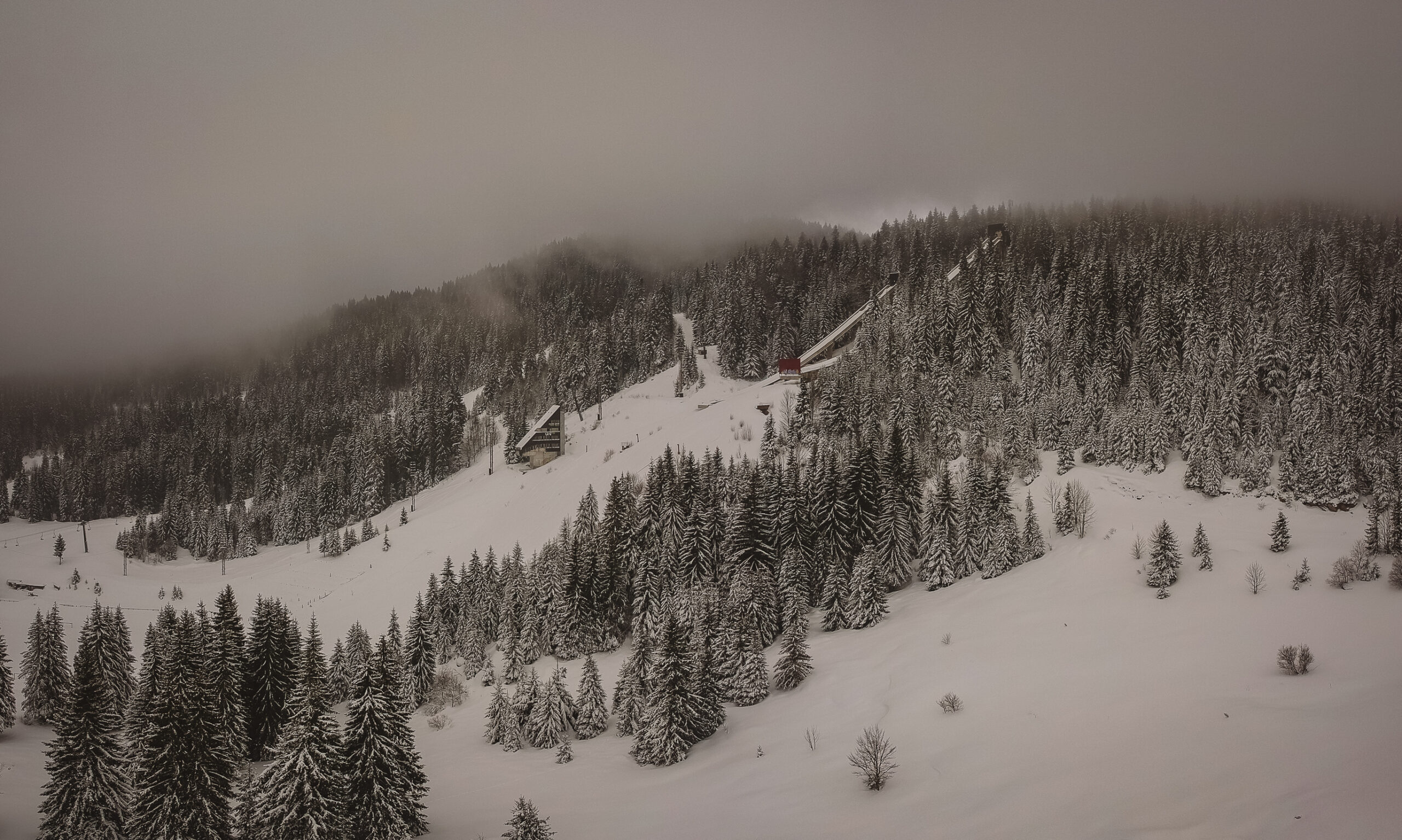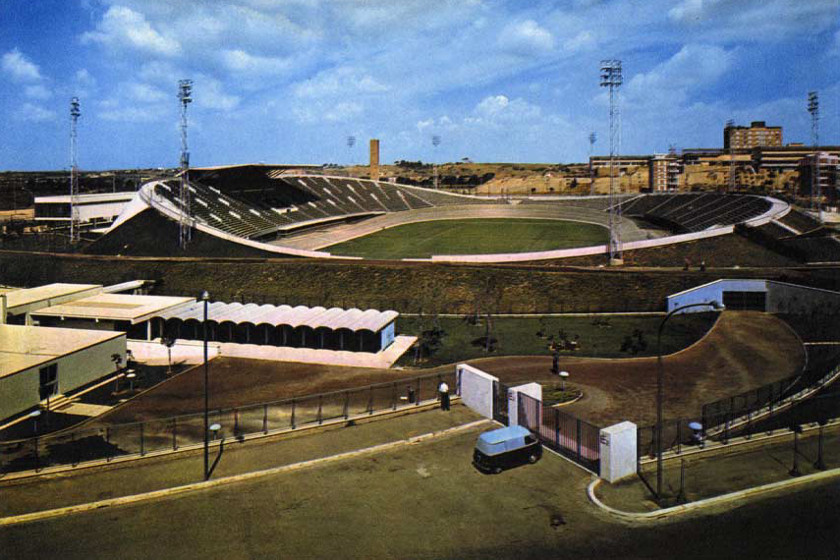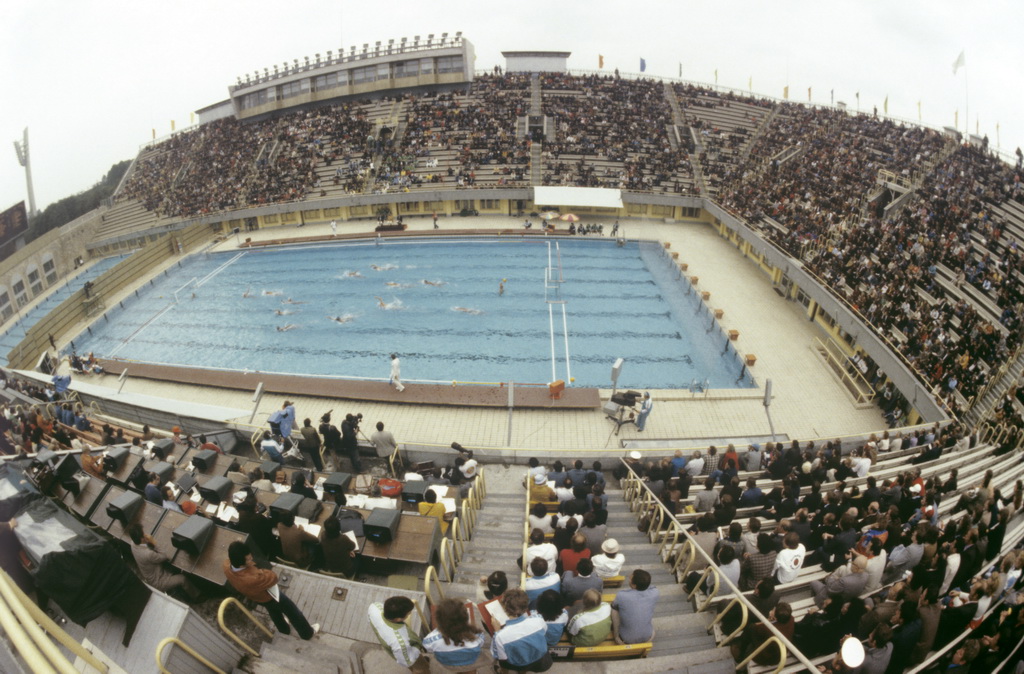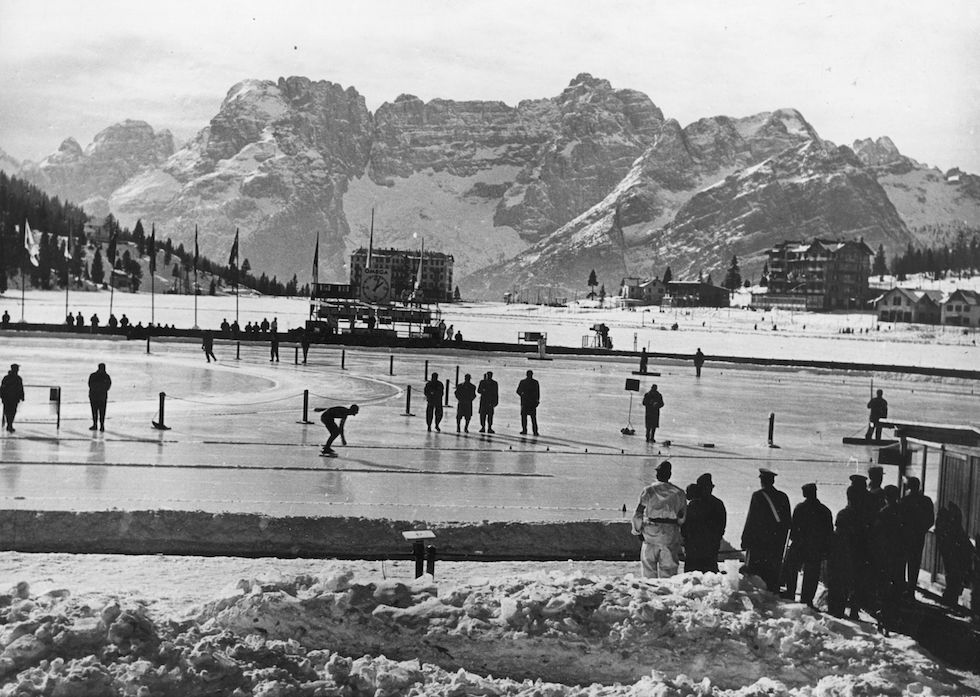The Olympic Games are celebrated as a spectacle of human achievement and global unity. However, once the athletes leave and the crowds disperse, many venues fall into disuse. These architectural marvels, built with ambition and high costs, often become forgotten relics. Over the years, some Olympic sites have become eerie reminders of wasted resources and neglected promises. Each abandoned venue tells a tale of its rise, fall, and the challenges of sustaining such grand projects. Here, we explore 14 iconic Olympic venues left to decay after their moment in the spotlight.
Sarajevo 1984 Winter Olympics – Ski Jumping Venue

The ski jumping venue in Sarajevo was a symbol of Yugoslavia’s ability to host a world-class event. Nestled in the beautiful Dinaric Alps, the towering structure provided breathtaking views and thrilling performances. However, the Bosnian War in the 1990s devastated the region, leaving the venue heavily damaged by artillery and gunfire. Today, the ski jumps are covered in graffiti, and the surrounding area is overtaken by weeds and rubble. Though some locals use the space for informal activities, the venue stands as a haunting reminder of both Olympic glory and wartime destruction.
Rio de Janeiro 2016 Summer Olympics – Aquatics Stadium

Built as part of Rio’s grand Olympic Park, the Aquatics Stadium was a focal point of the 2016 Games. It hosted swimming, diving, and water polo events, attracting millions of viewers worldwide. The structure was designed to be temporary, but after the Games, it fell into disrepair instead of being repurposed or dismantled as planned. Broken seats, algae-filled pools, and rusting frames dominate the area, while local efforts to reuse the space have largely failed. It highlights the ongoing challenge of balancing Olympic ambition with long-term sustainability in developing nations.
Berlin 1936 Summer Olympics – Bell Tower

The Bell Tower, part of Berlin’s Reichssportfeld, was an imposing structure designed to symbolize Nazi Germany’s strength during the 1936 Games. At the heart of the complex, it housed the massive Olympic bell, which rang to inaugurate the Games. After World War II, the tower was damaged and later reconstructed, but its relevance faded over time. Today, while partially maintained as a historical site, parts of the surrounding complex remain neglected, with rusting structures and overgrown grounds. The tower now serves as a somber reminder of the political propaganda tied to those Games.
Sochi 2014 Winter Olympics – Olympic Park Venues

Sochi’s Olympic Park featured cutting-edge venues like the Fisht Stadium and the Iceberg Skating Palace. These facilities were built to impress, with billions of dollars poured into their construction. After the Games, many of these venues were abandoned due to high maintenance costs and lack of demand. The park now feels like a ghost town, with empty buildings, fading paint, and crumbling infrastructure. Occasional events are held in some parts of the park, but the majority of its structures remain unused. The Sochi venues serve as a stark example of overbuilding and poor post-Olympic planning.
Munich 1972 Summer Olympics – Olympic Village

The Olympic Village in Munich housed thousands of athletes during the 1972 Summer Games. Its modernist design included spacious apartments and communal areas, symbolizing international cooperation. Following the tragic terrorist attack during those Games, parts of the village fell out of use and into decay. While some areas were later repurposed into student housing, others were abandoned, with peeling walls, broken windows, and overgrown walkways. The deserted sections stand in contrast to the once-vibrant atmosphere that filled the village during the Games, offering a poignant reminder of both triumph and tragedy.
Montreal 1976 Summer Olympics – Velodrome

Montreal’s Velodrome was an architectural masterpiece, with its striking dome design capturing global attention during the 1976 Summer Olympics. It hosted thrilling cycling events and showcased the city’s engineering prowess. However, the venue was expensive to maintain, and its original purpose was abandoned after the Games. Parts of it were converted into the Montreal Biodome, but the transition was incomplete. The remaining structures, marred by weathering and neglect, sit in stark contrast to the city’s other landmarks. Its decline represents the financial struggles Montreal faced following its over-budget Olympic efforts.
Rome 1960 Summer Olympics – Velodrome

The Velodrome in Rome was a shining example of mid-century sports architecture, designed to reflect the elegance and innovation of the Italian capital. It hosted cycling events during the 1960 Summer Olympics and drew thousands of spectators. After the Games, however, it struggled to find a purpose. Over the decades, it was left to deteriorate, with its once-glossy track now cracked and faded. The seats are weather-worn, and wild vegetation has overtaken the structure. Efforts to revitalize the site have failed, leaving it as a ghostly relic of Rome’s Olympic history.
Athens 2004 Summer Olympics – Canoe/Kayak Slalom Centre

The Canoe/Kayak Slalom Centre in Athens was an engineering marvel when it debuted. Featuring a high-tech artificial river with adjustable rapids, it was designed to challenge even the most skilled athletes. During the 2004 Olympics, it hosted unforgettable races in front of packed crowds. However, post-Games, Greece’s economic crisis made upkeep impossible. The pumps stopped running, leaving stagnant water filled with algae. Weeds and debris now cover the once-vibrant facility. Despite its decline, the site serves as a stark reminder of the financial burden of hosting the Olympics.
Lake Placid 1932/1980 Winter Olympics – Bobsleigh Track

Lake Placid’s bobsleigh track was a pioneering structure for its time, thrilling spectators during both the 1932 and 1980 Winter Games. Its steep curves and icy runs set the stage for high-speed drama. Over time, the track became outdated and too costly to maintain. Attempts to modernize it failed, leading to its closure. Today, rusted rails and cracked concrete trace the path where Olympic athletes once raced. Though the town of Lake Placid remains a hub for winter sports, the abandoned track is a reminder of changing demands in the sport.
Seoul 1988 Summer Olympics – Kayaking Course

The kayaking course in Seoul stretched along the Han River, providing athletes with challenging currents and a scenic urban backdrop. Designed to international standards, it was a highlight of the 1988 Games. Afterward, the site saw minimal use, as kayaking lacked popularity in South Korea. Years of neglect led to structural decay, with broken barriers and overgrown plants dominating the area. While the river remains an iconic part of Seoul, the course itself has been largely forgotten, overshadowed by the city’s rapid modernization.
Barcelona 1992 Summer Olympics – Montjuïc Pool

The Montjuïc Pool offered breathtaking views of Barcelona during the 1992 Games, creating one of the most picturesque Olympic venues ever. It hosted diving and synchronized swimming events, drawing worldwide attention. After the Olympics, the pool became a sporadic venue for exhibitions and TV productions. However, much of the infrastructure was left to decay. The diving platforms now show signs of wear, while the surrounding seating areas are weathered and overgrown. Despite its condition, the pool remains a popular backdrop for photographers, preserving its visual charm.
Moscow 1980 Summer Olympics – Outdoor Pools

Moscow’s outdoor pools were state-of-the-art facilities designed to showcase aquatic events during the 1980 Summer Olympics. The pools, surrounded by imposing Soviet-era architecture, were a point of pride during the Games. Afterward, the pools fell into disuse due to poor maintenance and shifts in government priorities. Today, the empty basins are filled with debris, while rusting diving boards and cracked tiles show years of neglect. The site, once teeming with Olympic spirit, now feels eerily deserted, a symbol of the USSR’s decline.
Cortina d’Ampezzo 1956 Winter Olympics – Ice Rink

The ice rink in Cortina d’Ampezzo was an iconic venue during the 1956 Winter Games. Set against the stunning Dolomite Mountains, it hosted figure skating and hockey competitions. Initially celebrated for its design and scenic location, the rink quickly became outdated as indoor facilities gained popularity. Attempts to preserve the site were minimal, and it was eventually abandoned. Today, the stands are crumbling, and the rink is filled with dirt and debris. Despite its condition, the venue remains a nostalgic relic of Italy’s first Winter Olympics.
This article originally appeared on Rarest.org.
More from Rarest.org
20 Antique Kitchenware Pieces That Are Surprisingly Valuable

Vintage kitchenware has become more than just nostalgic decor; many pieces are now surprisingly valuable collectibles. Read More.
18 Oldest Maps in the World

Maps are some of humanity’s oldest tools for understanding and navigating the world, reflecting not only geographical knowledge but also the cultural perspectives of their creators. Read More.
20 Largest Pyramids in the World

Pyramids have fascinated people for thousands of years, standing as monumental symbols of ancient engineering and cultural significance. Read More.
